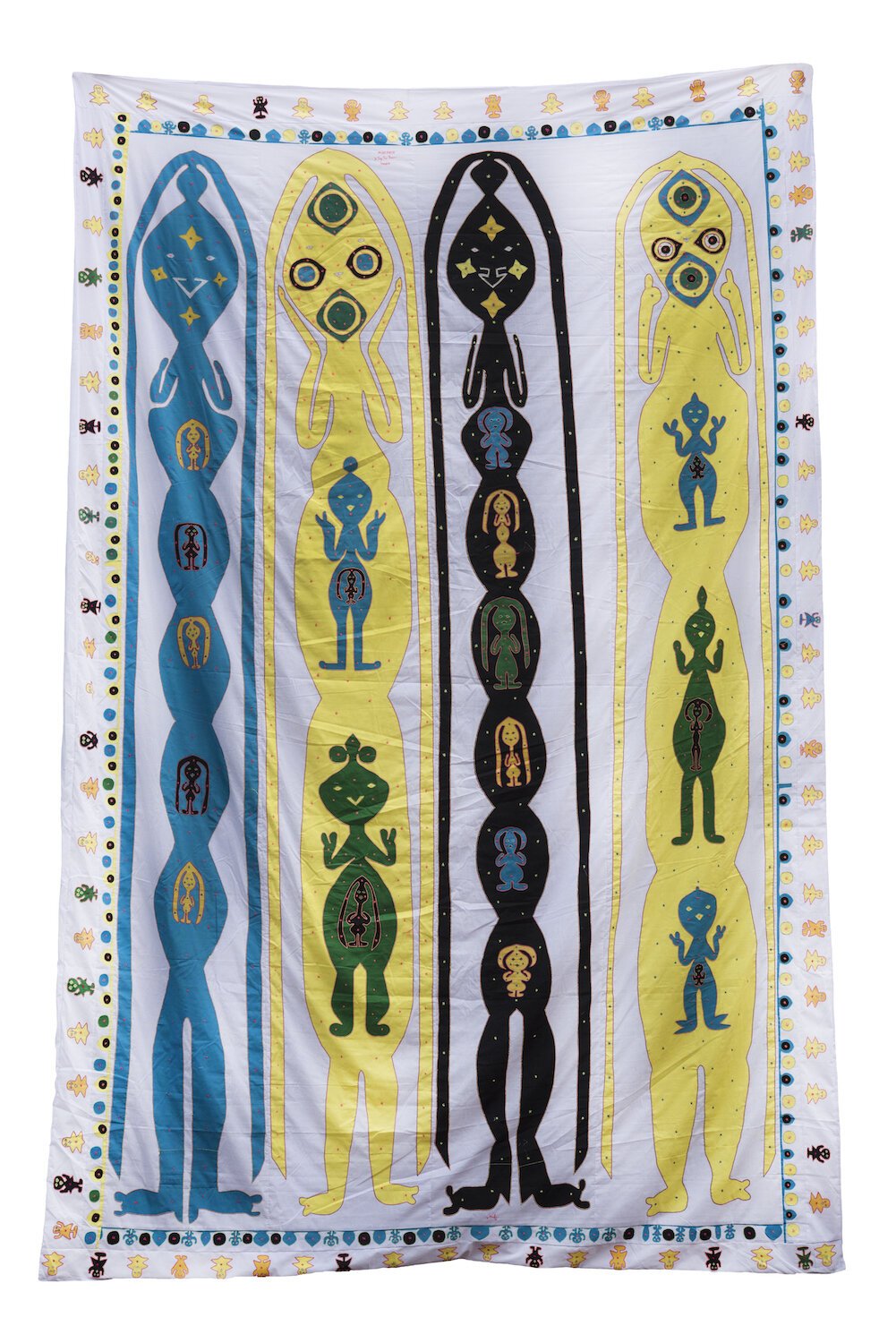Ho Tzu Nyen and Hsu-Chia Wei Curate the 7th Asian Art Biennial
Reimagining Asia at National Taiwan Museum of Fine Arts
By Ho See Wah
Korakrit Arunanondchai & Alex Gvojic (with boychild), ‘No History in a Room Filled with People with Funny Names 5’, 2018, three-channel video installation, dimensions variable. ©Roberto Marossi. Image courtesy of 2019 Asian Art Biennial.
The seventh edition of the Asian Art Biennial, ‘The Strangers from Beyond the Mountain and the Sea’ is set to happen from 5 October to 9 February 2020. Held at the National Taiwan Museum of Fine Arts in Taichung, it is curated by artists Ho Tzu Nyen (Singapore) and Hsu Chia-Wei (Taiwan), and will feature 30 artists and artist collectives from 16 countries, including Southeast Asian countries Malaysia, Laos, Burma, Indonesia, Thailand and Singapore.
Speaking about the Biennial’s unique geographical positionality, Hsu says, “Taiwan is located at the intersection of Northeast and Southeast Asia. There are many overlapping and multi-faceted topics from both regions that can be discussed here. Thus, the exhibition can go beyond the existing frameworks for interpreting the respective regions through this unique perspective.” The curators are also invested in exploring new formats for exhibition-making. Ho explains, “The Asian Art Biennial is not among the largest-scaled biennales in Asia, but I believe that its moderate scale makes it ideal as a platform to create experiments, not only in its theme and the questions it asks, but also in how an exhibition can be designed.”
The Exhibition Diagram of 2019 Asian Art Biennial.
The Biennial explores the meeting points of the ongoing process of decolonisation in Asia and trending global concerns such as ecological concerns and technological revolution. This reframes and decentralises power nodes inherited from the era of colonisation and brings a multitude of previously invisible perspectives to the forefront, with regard to the aforementioned global concerns. At the same time, Hsu says, “We are trying to deal with the political and historical issues that have been unresolved in Asia with different methodologies, such as non-human perspectives or geological considerations.” Ho highlights two books that are key references for the curators: ‘The Art of Not Being Governed’ by James C. Scott and ‘We Have Never Been Modern’ by Bruno Latour. The former explicates an alternative historical view of Zomia, a highland anarchist region spanning across Southeast Asia, whereas the latter is a foundational text for post-Anthropocentric schools of thought.
Yee I-Lann, ‘Sulu Stories: The Ch’i-lin of Calauit’, 2005, digital C-type print, 61 x 61cm. Image courtesy of 2019 Asian Art Biennial.
For artist Yee I-Lann, who identifies as a Sabahan Bornean Malaysian, her artwork ‘Sulu Stories’ unearths the various ways of understanding the Sulu Sea beyond its current conception as a place rife with pirates and politics. Yee notes, “‘Sulu Stories’ can remind audiences at the Asian Art Biennial that the horizon line can never really be pinned down, never fully defined or known and that perspectives constantly shift depending on where you look, think and feel.” In line with finding new ways of understanding contemporary global trends, the artist’s practice has recently shifted towards collaborating with sea- and land-based communities, which has enabled her to understand the world from the communities’ knowledge, methodologies and stories. “I am no longer the centre of the universe looking out with my perspective,” says the artist. “Rather than looking at the horizon line and waving at it, I am enjoying floating about, swimming and dreaming outside my head.”
Tcheu Siong, ‘Three Hmong Protectors 3’, 2018, embroidery and applique on cotton, 423 × 280cm. Image courtesy of 2019 Asian Art Biennial.
Tcheu Siong, a Hmong whose village was relocated to the city of Luang Prabang by the Laotian government, views her community as being “the strangers from beyond the mountains” as she relates how her ancestors came from north China and made their way towards Southeast Asia over the centuries. Her practice involves weaving her dreams onto textiles after they have been interpreted by her husband, the village shaman. Her dreams feature Hmong spirits, whom she states are mostly good ones that protect her house and her family. This belief system reminds us that there are many ways of interpreting our phenomenological experiences of being in the world, and as with the project of decolonisation, the expression of these experiences is not hegemonic.
Sawangwongse Yawnghwe, ‘The Opium Parallax’, 2019, oil on linen, 224 × 400cm. Production supported by Rijksakademie van beeldende kunsten. Image courtesy of 2019 Asian Art Biennial.
Burmese artist Sawangwongse Yawnghwe presents ‘The Opium Parallex’, which seeks to detangle the various agents and factors involved in the opium industry traversing the Shan State. Speaking about being included in the Biennial, Yawnghwe says, “When you look at the diagram by Ho and Hsu, it represents the “incompleteness” of possibilities, where located in the centre is “The Void”. ‘The Opium Parallex’ and its footnotes elucidate this incompleteness that is filled with seemingly unimaginable situations, or in this case, the “void”.” The artist’s work is also a critique of nation-states and reveals the hidden narratives of minorities when viewed in tandem with his artistic oeuvre.
Other participating Southeast Asian artists and collectives include Antariksa, Charles Lim, Ho Rui An, Jiandyin, Korakrit Arunanondchai, Lifepatch, Ming Wong, Wukir Survadi and the late Roslisham Ismail (also known as Ise). Their works in the exhibition serve to destabilise current ways of perceiving and propose alternative entry points for reimagining Asia in the world. This iteration of the Asian Art Biennial is uniquely positioned to bring fresh perceptions to existing frameworks and ideas, and we look forward to the synergies produced when the artworks from various cultures and geographies come into conversation with one another.
‘The Strangers from Beyond the Mountain and the Sea’ is on view from 5 October 2019 to 9 February 2020.












